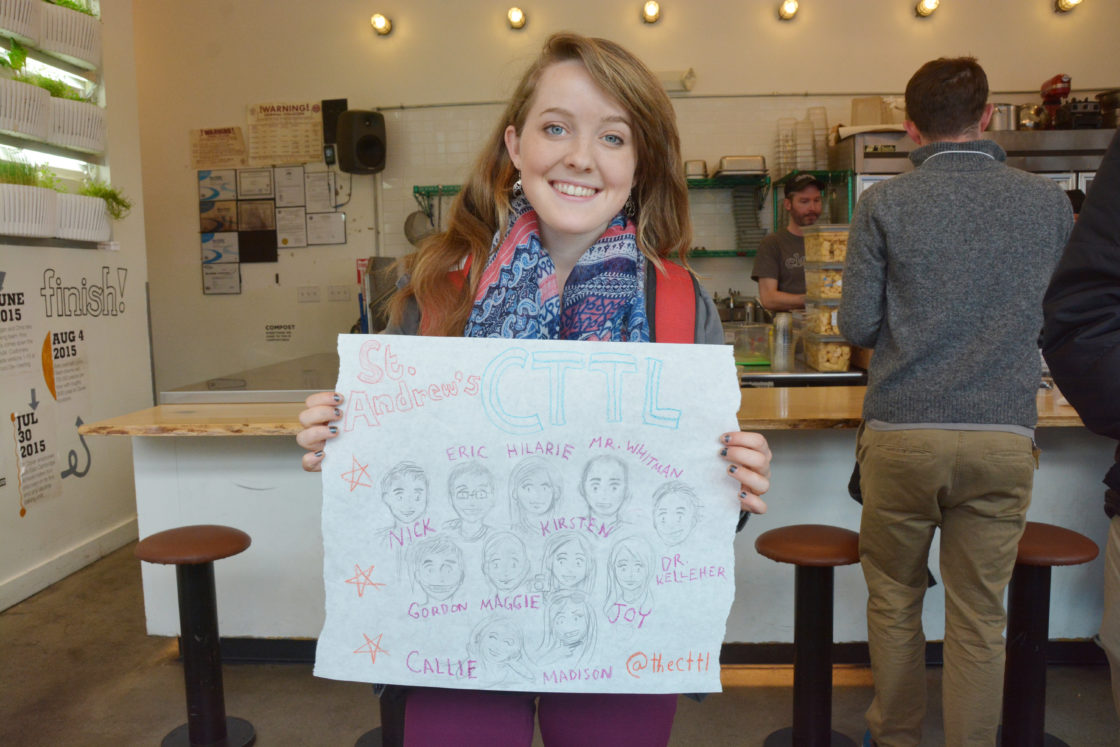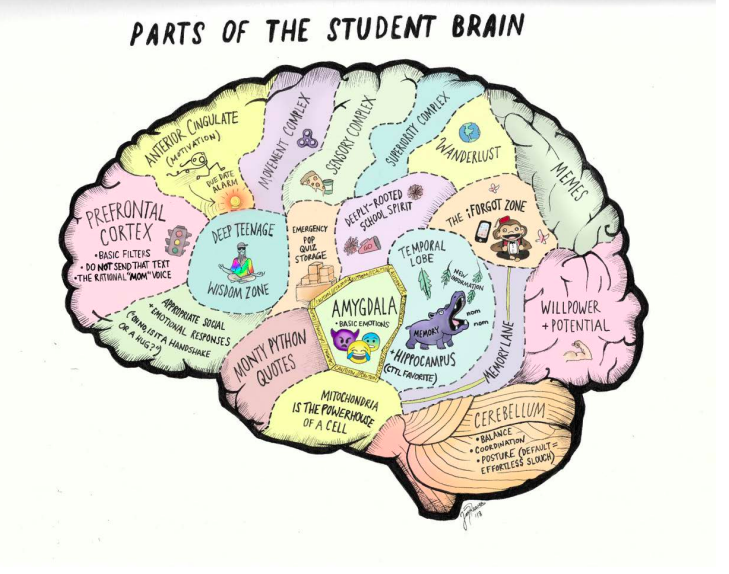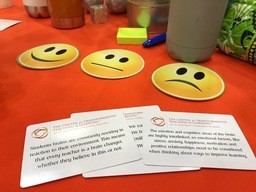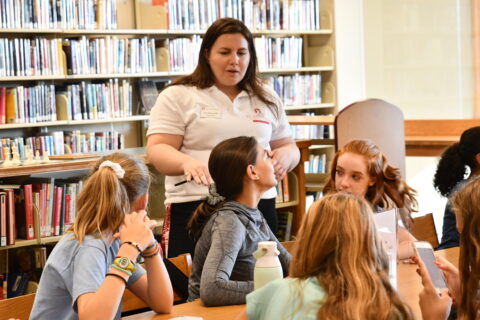By Joy Reeves
Editor’s note: This article was written for Volume 3 of “Think Differently and Deeply,” when Joy was a student at St. Andrew’s Episcopal School, home to the Center for Transformative Teaching & Learning, in Potomac, Maryland.
Behind each of my cartoons, I try to insert an underlying and relatable truth. For an image that would be used on the cover of the CTTL workbook for its Science of Teaching and School Leadership Academy, I was told that I should aim to combine humor and subtle scientific accuracies in a drawing that would convey a goal of the CTTL: understanding the brain as a core part of teaching and learning.
So, I decided I would teach the audience a perspective of my own.
First came the sketch. What came to my mind? A huge brain. Not just any brain, but a hectic, glorious student brain; a brain drawn from my experiences as a teenager, a scholar, and a CTTL Finn Family Student Research Fellow. In attempting to sketch a human brain and drawing what looked like a dehydrated lima bean, I quickly realized that I was very rusty on my neurological scientific anatomy. Refusing to admit that I was a CTTL fellow finding myself in this position, I quickly turned to the Internet for detailed brain diagrams. I found hundreds. Before I knew it, I was enjoying a self-taught lesson on the parts and regions of my own mind, becoming absorbed in the complexities and conveniences of its remarkable design.
Listen to Joy talk about her creative process in Episode 10 of the Think Differently and Deeply Podcast, recorded in Winter 2019.
I first drew out several factual parts and regions of the brain. I was reminded that our capacity for rational thought is really guided by the prefrontal cortex region lying just behind our foreheads. Also, the fact that we all have a portion of the brain called the anterior cingulate that is dedicated entirely to motivation is fascinating. Most diagrams of the brain are so detailed, it’s overwhelming, yet understanding the regions of our brain is crucial for education.
I considered just drawing my own labeled scientific diagram for the CTTL cover. But where’s the fun in that? I was missing something. What about the portion of our student brains that craves a three-cheese pizza at midnight, or harbors hundreds of our favorite snippets of Internet humor? What about wanderlust, spontaneous teenage wisdom, or the deeply-rooted school spirit that emerges in our senior year of high school? I started drawing in these abstract, imaginative regions to capture both the teenage mind and soul. My sketch combined factual regions such as the hippocampus, amygdala, and prefrontal cortex, with my fictional regions, such as “Memory Lane” or the “iForgot Zone.” A traffic light, a hippo, a monkey with cymbals, and, yes, a fidget spinner, all took form in my diagram.
After a few hours spent drawing and inhaling the fumes of permanent markers, I had transferred the sketch into a final inked form and uploaded it to Photoshop. As the CTTL would say, I was not proficient with Photoshop…yet. I decided it was time to teach myself the skill. Finally, and victoriously, I succeeded in blocking in a simple psychedelic pastel color scheme to my brain drawing. I experienced firsthand another central message of the CTTL: our brains are not fixed to be “good” or “bad” at something indefinitely.
Overall, the opportunity to create a cartoon for the CTTL was one of the most rewarding parts of my summer of 2017. I hope that parents, teachers, students, and Academy attendees can all relate to my depiction of the animated, ridiculous, and remarkable Student Brain.

Joy Reeves graduated from St. Andrew’s Episcopal School in 2018 and was a CTTL/Finn Student Research Fellow.




